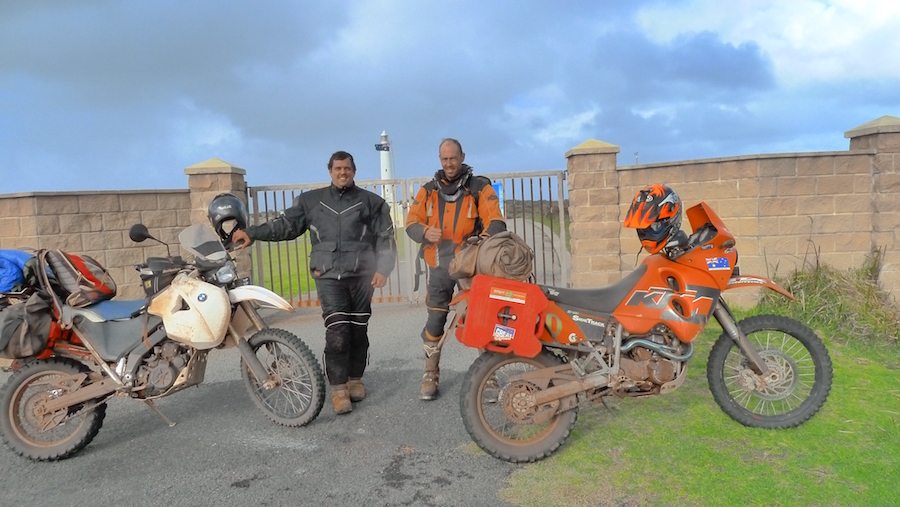Cape to Cape
When Adrian Knight rode his BMW650 X-Challenge solo from Steep Point in Western Australia to the mainland’s most easterly point, the lighthouse at Byron Bay, he created a stir by claiming a new unofficial record, although some watchers claimed foul because Knight had not crossed the Simpson Desert. Inveterate adventurers Phil ‘Dairy Farmer’ Hodgens and (the late) Bill Laver then took another poke at the journey and completed the job in 92 hours 17 minutes for 5612km – including the the Simpson Desert’s 1100 sand dunes.
Then Knight decided on a potentially longer transcontinental ride: from Cape York to Cape Leeuwin. He resurrected the BMW650 X-Challenge, this time adding a 16-litre Touratech tank and twin five-litre units at the rear. Comforts included a small screen, grip warmers and handguards. And a softer pew. He’d also conned another crazy to accompany him – Conrad McKee. The only thing the two riders had in common (except no sense) was that they’d both taken on the Great Victorian Desert solo; Knight had ridden it for a lark and McKee had walked across it for the Inspire Australia charity. This time round McKee was aboard his long term KTM 640 Adventurer – 60,000 plus on the odo with a top-end rebuild somewhere in the distant past.
Starting from Cape York in early June, Knight and McKee seemed to be the only travellers heading south against the fleets of fourbies in the northbound dust storm. The deep sand was chewing power and when Knight hit a washout that destroyed his GPS he kept the Beemer tapped. But the whack had lodged one of the rear brake pistons against the disc, thereby melting the piston. This literally shot their plans down in flames – in fact the brake lines were still smoking. They were forced to stop at Cairns, adding a couple of hours and several hundred clicks to their challenge. Enough to call it quits there and then.
But a sparrow’s start the following day saw them clear of Queensland’s cattle country, cross the rugged ore-laden mountain ranges and bedded down for a late finish at Tobermorey just inside the NT Border. Now back on a roll they shot across the Plenty Highway, well named for its corrugations and potholes, then enjoyed an easy run south on the blacktop through Alice Springs and on to Uluru, avoiding the annual pilgrimage of Japanese tourists in Britz campers and the ever-present boys in blue.
A beautiful sunset on Kata Tjuta was no compensation when they failed to reach Docker River before closing. They pressed on westwards to a cold and uncomfortable night in their swags, fortified only by a couple of Bundies and canteen water. Next day they were waiting at the pumps when the servo at Warburton opened and were long gone 10 minutes later with the wind chill below zero. Eight hours on they were unlucky enough to hit Kalgoorlie at peak hour, being dive bombed by squadrons of crew cab utes heading for the skimpy bars. On clearing the traffic, they pushed on to Hyden for a couple of rums as a defence against the rain squalls now attacking off the Southern Ocean. At the small hamlet of Wagin, the darkness, the wind and the rain stopped progress and they rolled out the swags in the town’s old machinery shed – 1480km from the hip holes in the Great Victoria Desert in which they’d slept the previous night.
The boys were up and on the move before dawn and, as if to honour their arrival, as they rolled towards the Cape Leeuwin lighthouse, the clouds dispersed and the winter sun brought a little warmth to their bones. They’d hoped to arrive sooner but with the Kato’s big end rattling ominously they were lucky to make it at all. They’d ridden 5832km in a little less than 101 hours. But taking into account the detour to Cairns, they figure, the distance from Cape York to Cape Leeuwin is approximately the same as from Steep Point to Cape Byron. As for any records, who really cares.

WORDS PETER WHITAKER